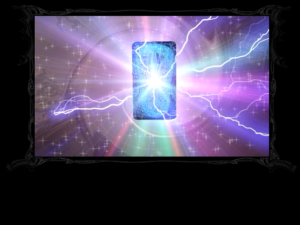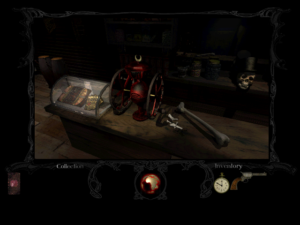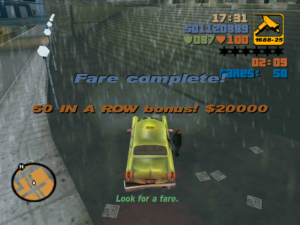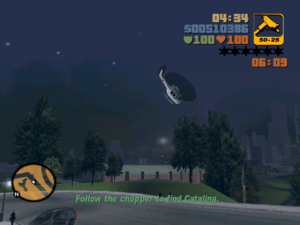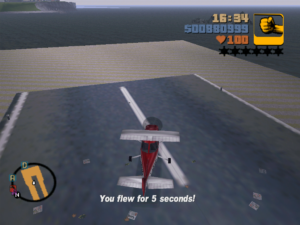Serious Sam: The Second Encounter
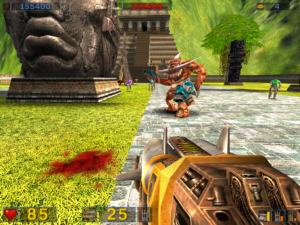 This time around, I was in the mood for something mindless. It’s been a while since I played a first-person shooter, so I pulled out Serious Sam: The Second Encounter, which is not to be confused with Serious Sam 2. They’re both sequels to Serious Sam: The First Encounter, but this one is older and uses approximately the same graphics engine as the original. “First, Second, Two” isn’t the best numbering scheme in the world, but I’ve seen worse. (Dark Forces/Dark Forces 2: Jedi Knight/Jedi Knight 2 comes to mind, as does Heretic/Hexen/Hexen 2/Heretic 2.)
This time around, I was in the mood for something mindless. It’s been a while since I played a first-person shooter, so I pulled out Serious Sam: The Second Encounter, which is not to be confused with Serious Sam 2. They’re both sequels to Serious Sam: The First Encounter, but this one is older and uses approximately the same graphics engine as the original. “First, Second, Two” isn’t the best numbering scheme in the world, but I’ve seen worse. (Dark Forces/Dark Forces 2: Jedi Knight/Jedi Knight 2 comes to mind, as does Heretic/Hexen/Hexen 2/Heretic 2.)
Like the original Serious Sam, this is a big, loud, dumb game that knows it’s big, loud, and dumb, and sets out to be the very best game it can be without sacrificing the bigness, loudness, and dumbness. At the time when it was released, games like Half-Life and Deus Ex were starting to turn the FPS genre into something more sophisticated, something where the action was part of a narrative set in a coherent world, where there was more to the player’s actions than shooting everything. 1In a way, this was not so much a new development as the genre returning to its roots. Ultima Underworld is a game in this more story-driven and less action-based mode, and although it’s not usually classified as a FPS, it was the inspiration for Wolfenstein 3D and thus for the FPS genre as a whole. But after the phenomenal success of Doom, this kind of design took a backseat to emphasis on graphics technology. The designers of Serious Sam consciously and deliberately rejected all that. This is a game where the thought “Should I blow that up?” is immediately followed by “Sure, why not? It couldn’t hurt.”
To the extent that Serious Sam added anything important to the genre, it’s because of its improved technology and its perspective on what’s gone before. The technology is obvious: the graphics take advantage of advanced techniques that couldn’t have been done practically in Doom. There’s even a special demo area with Utah teapots to show off what the engine can do. But the perspective on the past, while less obvious, is just as important. When Serious Sam was released, most people took one look at the guy on the box and concluded that it was a Duke Nukem clone. This is wrong: it’s an everything clone. The designers seem to have chosen a distinctive element from each major old-school FPS written up to that point. Duke Nukem 3D provided the template for the macho, wisecracking player character. Quake provided the leaping Fiends, the obvious model for the Kleer Skeletons, one of the best monsters in the game. From System Shock, we get Autobombs, remade here as Headless Kamikaze. From Rise of the Triad, the dual pistols. From Powerslave, the ancient Egyptian setting. I could go on.
The Second Encounter isn’t set in Egypt, though. It starts near a Mayan temple, which is rougly equivalent to Egypt from a level-designer’s point of view, except that the texture maps are different and the exterior scenes contain vegetation. I think this is the first FPS I’ve played in which you can actually use your Doom-style chainsaw to cut down trees. Or, of course, you can pull out your rocket launcher blow them up.
| ↑1 | In a way, this was not so much a new development as the genre returning to its roots. Ultima Underworld is a game in this more story-driven and less action-based mode, and although it’s not usually classified as a FPS, it was the inspiration for Wolfenstein 3D and thus for the FPS genre as a whole. But after the phenomenal success of Doom, this kind of design took a backseat to emphasis on graphics technology. |
|---|
 Comments(3)
Comments(3)